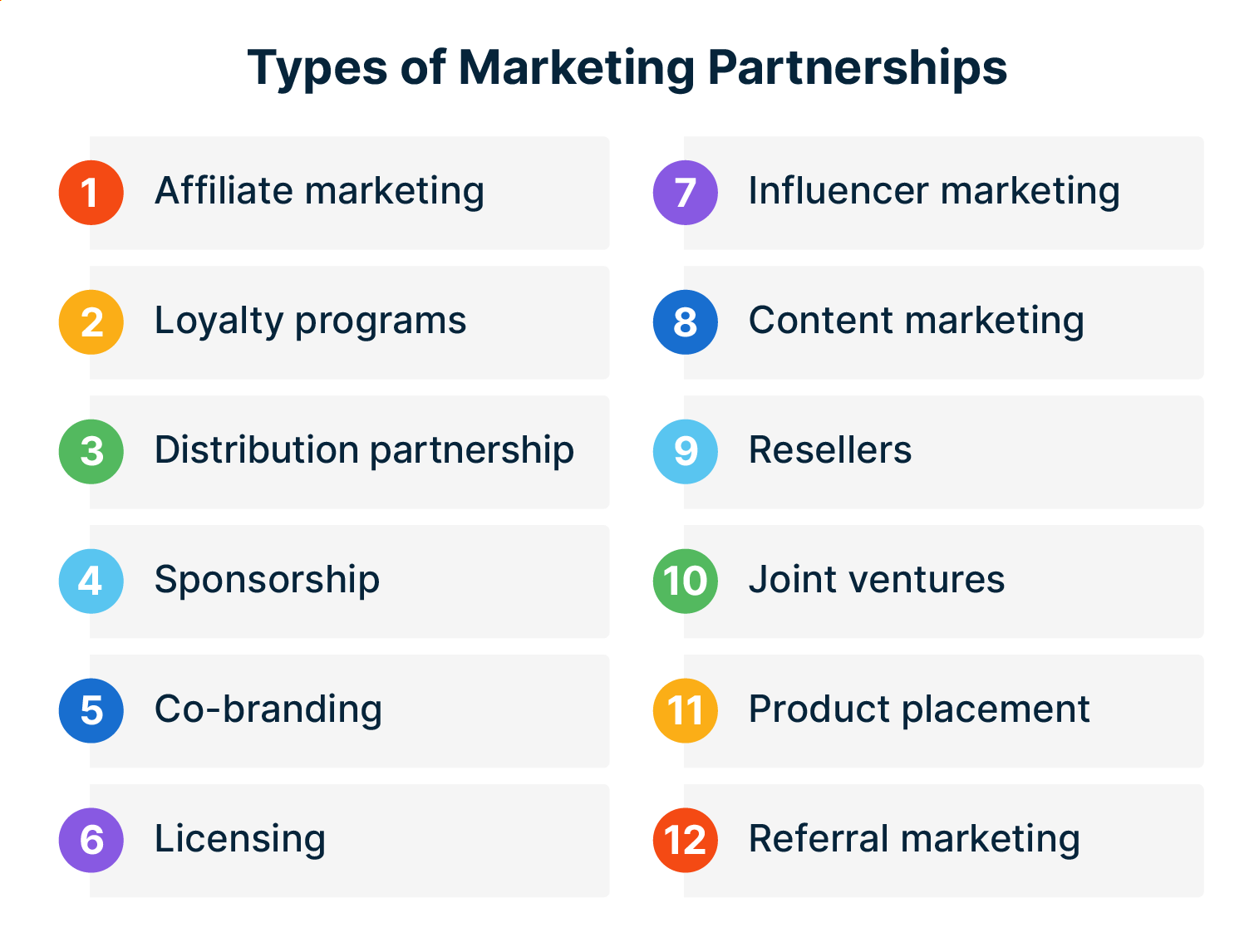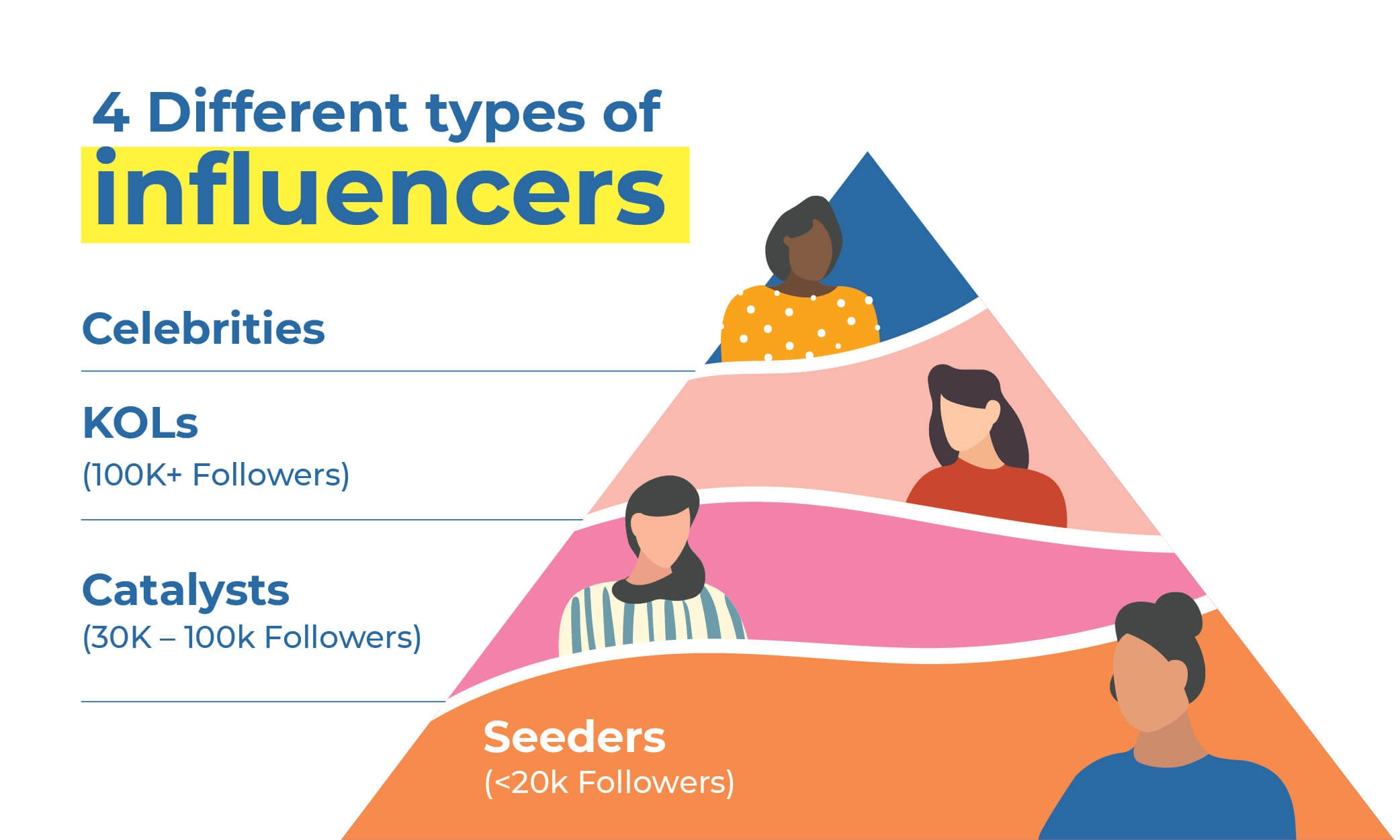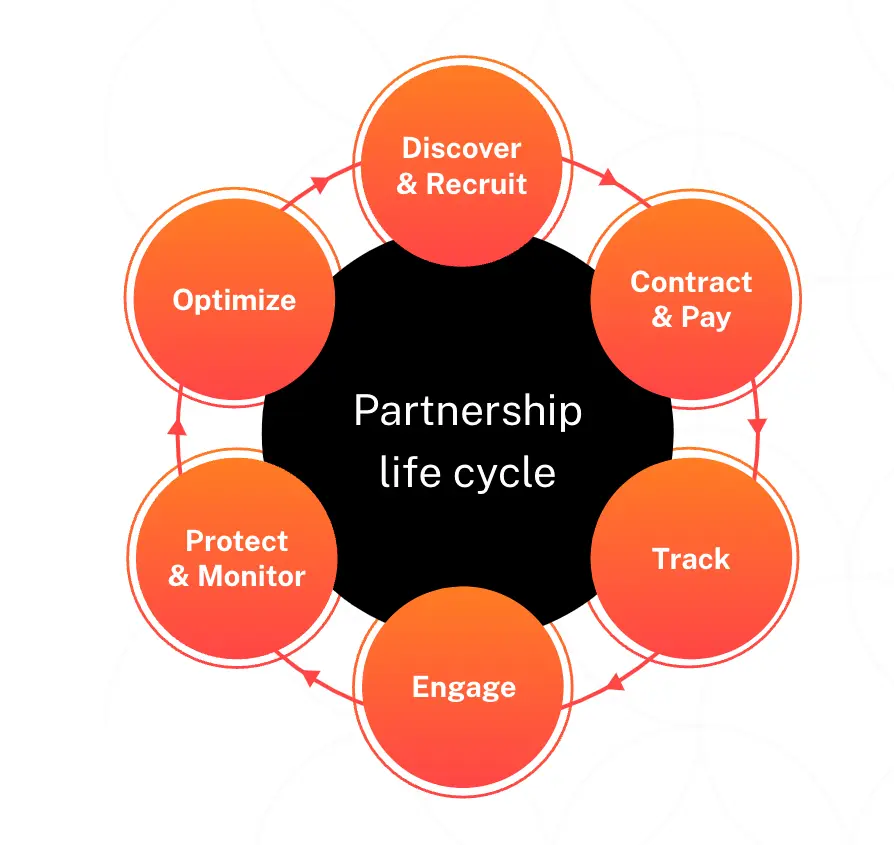Imagine if businesses went on dates, scouting for the perfect match to “couple up” and wow the world together.
That’s partnership marketing in a nutshell — a strategy where businesses pair up to achieve marketing nirvana, boosting each other’s strengths while covering the weaknesses.
Nowadays, it’s not just about solo moves but finding the right rhythm with partners to cut through the noise.
Data shows partnerships can catapult reach, engagement, and sales, proving it’s not just who you know, but how you join forces that counts.
Now, isn’t that a match made in heaven?
Let’s answer all the questions you might have. Keep reading!
Partnership Marketing in 2024
As we cruise into 2024, the marketing world isn’t just embracing change; it’s swiping right on partnership marketing, propelled by our changing consumer behaviors.
Gone are the days when traditional marketing had consumers at “Hello, just buy “it”!”.
Today, it’s all about creating relationships, not just transactions.
Consumers are like that friend who always knows the latest trends; they’re savvy, they crave authenticity, and they have the attention span of a goldfish in a sea of content.
Enter partnership marketing, the matchmaker of the marketing world, setting up brands with the perfect partners to woo consumers in unison.
The goals of partnership marketing, now hitting the high notes, include:
- Expanding reach. Team up to amplify your audience, because two voices are louder, and a lot more catchy, than one.
- Enhancing engagement. Creating video content, texts and visuals that stick, much like the catchiest tune, by leveraging the unique strengths of each partner.
- Boosting sales. Through united fronts, partners can turn harmonious interactions into transactions that resonate.
- Mutual growth. Like a band on tour, both brands grow their fanbase, sharing the spotlight and the success.
To amplify reach, engagement, and sales through collaborative creativity and shared values, all while keeping an eye on the prize: mutual growth.
With 68% of consumers ready to make buying decisions post-co-marketing campaigns before even whispering sweet nothings to sales reps, and companies reporting that partnerships can contribute over 20% of total revenue, it’s clear that partnership marketing is not just a fling but a long-term commitment to growth.
This isn’t just about getting more likes or shares; it’s about building enduring connections and creating value that resonates.
10 Types of Partnership Marketing
Diving into the colorful world of partnership marketing is like exploring a treasure chest of opportunities where every jewel has its unique sparkle.

Let’s go through the best of these precious gems:
Affiliate Programs
Imagine a world where every recommendation you make can turn into a reward. That’s affiliate marketing for you.
Businesses partner with individuals or other companies to promote their products or services in exchange for a commission. It’s a win-win: brands gain visibility and sales; affiliates earn from their influence.
The digital realm buzzes with these partnerships, creating a web of connections that drive results.
Influencer Partnerships
Picture your favorite social media stars teaming up with brands to create authentic and engaging content.

This partnership type leverages the trust and rapport influencers have with their followers, turning endorsements into impactful marketing moments.
It’s not just about the reach but the relevance and genuine connection influencers can foster with their audience.
Co-Branding
When two brands come together to create a product that marries their unique strengths, magic happens.
Co-branding is like a culinary fusion that brings together distinct flavors to create something extraordinary.
This synergy doesn’t just capture the market; it also boosts the brand image and expands the customer base by drawing fans from both sides.
Distribution Partnerships
Imagine your product taking a journey across channels and platforms it couldn’t otherwise traverse alone.
Distribution partnerships let brands reach new markets and territories by leveraging the existing distribution networks of their partners.
It’s a smart move to position products right where the target customers are, even if they’re miles away or in completely different digital ecosystems.
Content Collaborations
Content is king, but collaborative content? That’s the empire.
Brands collaborate to produce top content that benefits from their combined expertise, creativity, and audiences.
Whether it’s a series of co-authored blog posts, joint webinars, or collaborative videos, the content produced not only doubles the value but also the reach, engaging and educating audiences in ways one brand alone couldn’t manage.
Each of these partnership types, from affiliate programs soaring in popularity to influencer partnerships crafting authentic connections, illustrates the versatility and potential of partnership marketing.
They’re not just strategies but gateways to building relationships, expanding reach, and creating unforgettable brand experiences that resonate with audiences far and wide.
Referral Partnerships
Picture your best friend telling you about a must-try new café.
That is referral marketing in a nutshell.
It is when businesses encourage either their customers or partners to refer new clients to them by giving referral incentives and, in that way, turn a satisfied client into a brand ambassador.
It’s an old-school approach, building trust through personal recommendations and rewarding those who spread the word.
Loyalty Programs
Loyalty programs are like those coffee shop punch cards but for the digital era.
This is, in fact, a rewards system to earn points, discounts, or exclusive perks for frequent purchases.
These give the customer a great reason to keep coming back to the particular store.
It’s a strategic embrace, turning transactions into relationships and casual buyers into loyal fans.
Sponsorships
Imagine a local sports team or event draped in your brand’s logo.
Sponsorships are partnerships where brands support events, teams, or individuals, in exchange for exposure.
It is not just a logo; it aligns the brand with experiences set alive and resonates with the audience to enhance brand visibility and goodwill.
Licensing
Think of your favorite cartoon character on a cereal box.
That’s licensing: a brand provides permission for another to use their intellectual property, be it through products or promotions.
This is through a product offering that is leading, extends the brand outreach by collaboration that combines recognition with trust and is highly innovative in nature.
Nonprofit Partnerships
When brands join forces with nonprofit organizations, it’s not just business; it’s a mission.
These partnerships often focus on social causes, leveraging the strengths of each party to make a significant impact.
It provides another strong way for the corporation to show its social responsibility, engage with communities in the deepest efforts, and build a brand that stands for something more.
Benefits of Partnership Marketing
Essentially, partnership marketing is sort of like stepping into a world that’s akin to finding that secret pathway leading to growth, engagement, and a treasure trove of other benefits.
First off, the right partners can help your business hit the brand visibility jackpot.
The resulting experiences touchpoint between brands double the scale of potential reach and open the bridge for partners to tap into each other’s audiences in a way that feels fresh and exciting.
That’s the synergy effect — two heads, or brands, are really better than one when it comes to creativity and resources.
So, bringing together those having artistic talent and those who hold knowledge about the marketing aspects may produce a level of innovation in the product and campaign which would have been impossible individually and is quite likely to, in reality, capture the consumer’s imagination and really create a buzz.
And let’s talk about trust.
Brands can also borrow credibility from each other by aligning with the right partners.
It’s like being recommended by a mutual friend; suddenly, everyone’s more interested in what you have to say.
Not to mention, partnership marketing can be a cost-effective strategy.
Sharing means you can aim for much bigger, bolder marketing campaigns or product launches without having to foot all the bills yourself.
It’s like splitting the bill at that fancy restaurant, so you can enjoy the gourmet meal without the wallet heartache.
Finally, the data doesn’t lie: partnership marketing can significantly boost sales and customer loyalty.
The strategies put in place — such as affiliate marketing, co-branded campaigns, etc. — are actually aimed not simply at an increase in sales at the spur of the moment but also encourage long-term commitment by the customers, wherein they keep coming back because of the reliance they have on their preferred brands or recommendations by their influencers.
At the highest level, then, diving into partnership marketing is akin to setting sail on a journey filled with opportunity, innovation, and mutual success.
It is none of them working by themselves but all of them weaving in tandem to form the richer, vibrant mix of brand growth and customer engagement.
How to Develop a Partnership Strategy
It’s almost like planning an orchestration when a partnership strategy is being developed.
Everything has to be in perfect harmony if you want an effective performance.
Let’s break it down into easy, actionable steps:
Step 1: Finding the Right Partner
It’s like forming a band where each member’s vibe and audience gel with the others.
This is a search for partners who share not just common values and goals of the brand but would be an addition to the strengths and weaknesses of the brand.
Think of a talent scout who, instead of finding somebody singing in tune with your brand’s chorus, takes that song and spreads it to new audiences.
Step 2: Harmonizing Your Goals
Next, co-write your hit single by setting mutual goals.
All this is about defining what success looks like for both parties in terms of whether it is boosting brand awareness, driving sales, or entering new markets.
What will become important is not that these are just shared goals, but that indeed, they are also measurable to ensure you are both singing from the same song sheet.
Step 3: Keeping the Rhythm with Performance Measurement
Now, you’re in the groove, and it’s time to measure how well your duet resonates with the audience.
This is because, through the implementation of KPIs, you will be in a position to track your goals on issues such as audience engagement, an increase in conversions, and overall ROI.
This is the most important feedback loop toward fine-tuning your strategy, ensuring that the partnership continues to hit the right notes and adapt to audience feedback.
Repeat: Continuous Optimization

The best partnerships aren’t one-hit wonders.
They evolve based on performance insights, market trends, and feedback from your shared audience.
Go back to your strategy from time to time to refine it, ensuring your partnership remains relevant and pays off for both brands and your audience continually.
In short, the secret of a chart-topping partner strategy is finding the right partner, setting the stage with clear goals, and keeping the beat through continuous performance tracking and optimization.
With these steps, you’re well on your way to creating a harmony that resonates far and wide.
Conclusion
We have looked at partnership marketing from an in-depth and inside-out view of the core steps in forging very productive partnerships and the many benefits it brings.
This will adequately set you up in terms of choosing the right partners, setting shared goals, and even measuring success for your brand before plunging into a very dynamic marketing strategy.
Partnership marketing stands out for its ability to expand reach and engagement while being cost-effective.
This means that brands have an opportunity to leverage each other’s strengths to give them a unique avenue in boosting their brand awareness, increasing product sales, and, in some cases, customer loyalty, which traditional marketing strategies are not likely to offer.
Looking ahead, the potential for partnership marketing is boundless.
Before diving in, make sure that you know beforehand all your needs and wants from partners and be on the lookout for partners whose values and brand goals align with yours.
If done correctly, partnership marketing will present you with great new avenues for sustained growth and ways to succeed.












